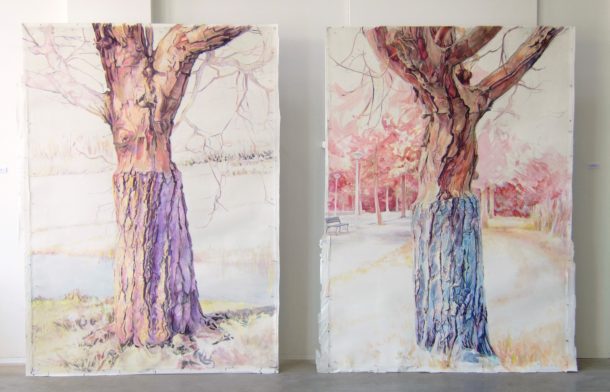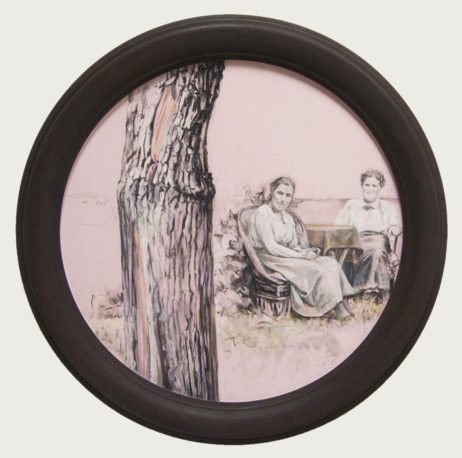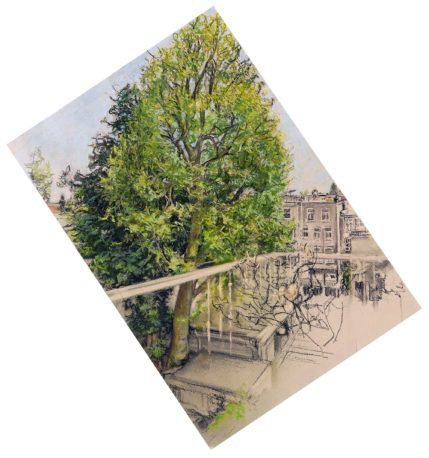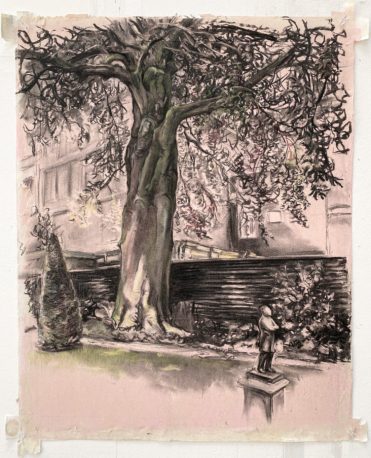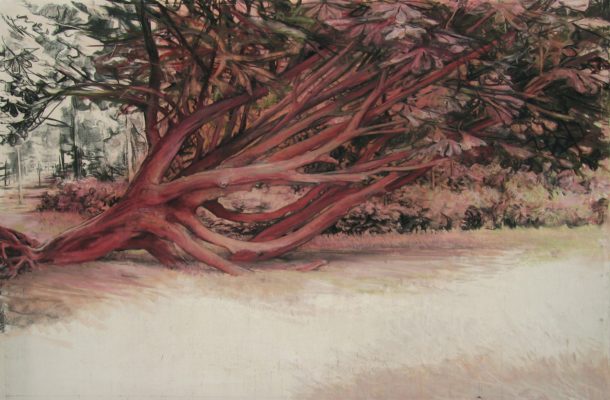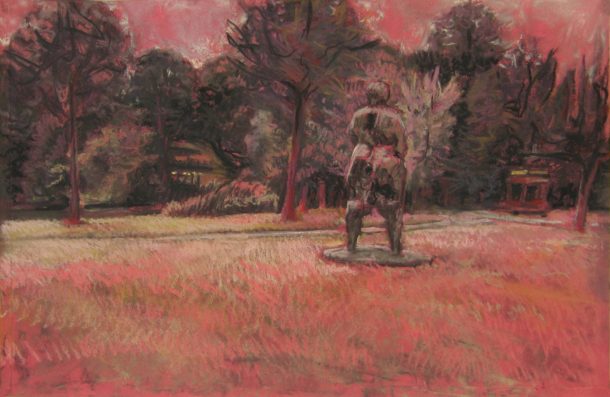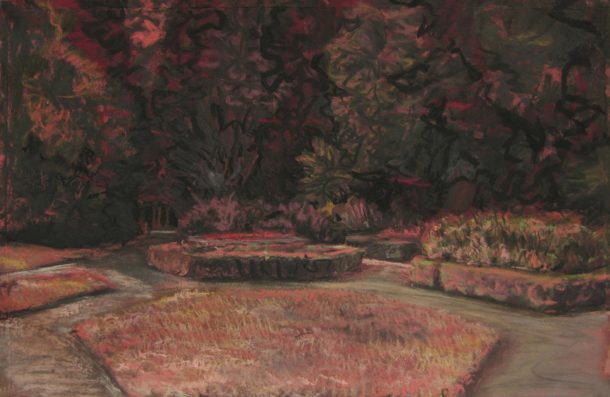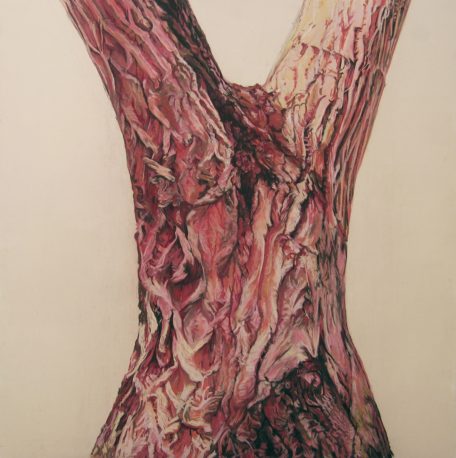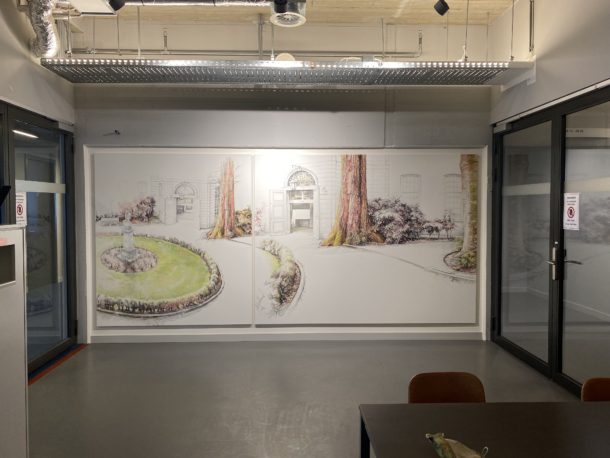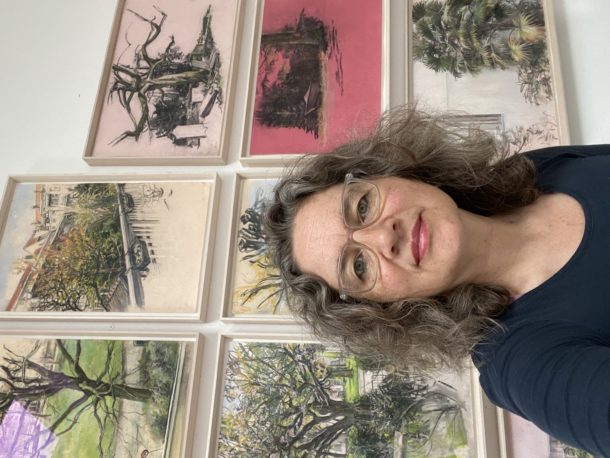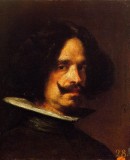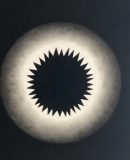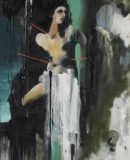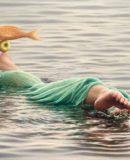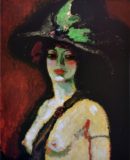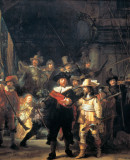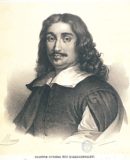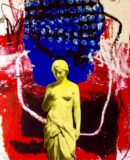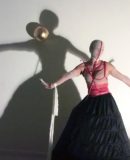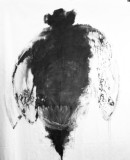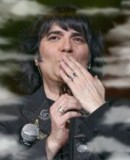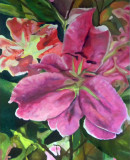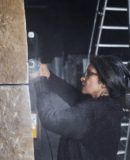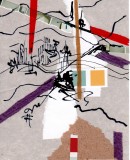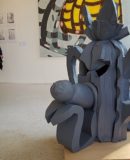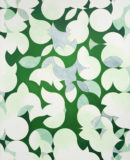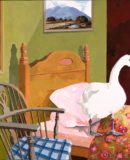World Fine Art Professionals and their Key-Pieces, 430 - Jet Nijkamp
World Fine Art Professionals and their Key-Pieces, 430 – Jet Nijkamp
Recently I saw the latest presentation by the artists of Art Allies in a large hall in the museum quarter of Amsterdam South. One of the artists whose work caught my eye was Jet Nijkamp. I saw many works with trees on them. That reminded me of Peter Wohlleben’s book The Hidden Life of Trees, which I had read a few years ago.
I made an appointment with Jet Nijkamp. A few weeks later I find myself in her studio – with a beautiful light from above – and there I see many of those tree drawings and paintings on one of the walls.
The tree
She appears to know Wohlleben’s book. Jet Nijkamp: “A very insightful book, written from practice. He tells how trees interact with each other underground. There is communication through fungi and hyphae. When threatened, trees pass on defense mechanisms to each other. He is mainly talking about trees in woods and forests. Here in Amsterdam we have the threat of Dutch elm disease, which is causing many trees to be felled. Then we are talking about the urban tree, which is less able to communicate with peers.”
The tree is the central theme in Jet Nijkamp’s work. After projects about, among other things, earthly life, what we eat in animals and plants and transience, a project about bunkers of the Atlantic Wall in the Dutch landscape and how those bunkers were given a different life after the war, trees became an increasingly dominant theme. especially city trees, but actually trees in general. It started in 2014 with a project about the trees in the Vondelpark. She sums it up:
• In my backyard (2014) was about the trees in the (old) Vondelpark, about the park as an organism;
• Daphne turned into a tree (2015-2016) was about the ‘human’ properties of trees, how we recognize our muscle structures in tree bark, how we see human forms in trees as Daphne’s turned into trees;
• B O O M (2018) was about our human relationship to (urban) trees;
• OMHP (2018-2021) was about a monumental elm in the Oudemanhuispoort and how that elm ended up in the memories of countless students and professors;
• Amsterdam 3high behind (2020-…..) is about the necessity that everyone should have a view of a tree from their home, no matter how small it is, the proverbial 3high behind.
Why is she so gripped by trees?
“Trees play many roles for people: they are used by people, manipulated, but also revered for their beneficial effects, their seemingly eternal lives, which makes them witnesses to (human) history. Trees, like written text and visual art, connect the present with the past and with the future, they make you travel in time. When you examine trees, you examine life and history.”
Does Jet have a key work?
She has. Although the key work does change over the years. “At the moment, a diptych of a tree in the Vondelpark is a key work. The first part of the diptych is called ‘Dancer’ (2017), the second part is called ‘Atlas Woman’ (2018). They are large-format drawings, in acrylic and pastel, of one and the same tree in the Vondelpark, but seen from two different angles.”
The diptych refers to many different topics that concern her:
• the biological factor: it is a red horse chestnut, a graft of a white horse chestnut and a red pavia (aesculus pavia). “You can see the graft line in the tree. People intervene in nature to change that nature, to improve it in their eyes, to breed variants. This tree could not have existed without people.”
• the cultural and historical side of the story. “The tree as object of projection of human stories. In the tree you can see a person: from one side a dancer with a beautiful bast and a long skirt and from the other side an Atlas carrying the world, but as a woman, wearing a skirt. The power of women carrying the world. Human stories that we project onto trees. This is how myths arise, such as those of Apollo and Daphne.”
How long has Jet been an artist and what is her education?
“As a child I grew up in an inspiring cultural environment, with a father who was an artist who taught me a lot and took me to galleries and museums. And a mother who could draw very well. I knew early on that I wanted to be an artist. When I was fifteen I was admitted to evening classes at the Rijksakademie (not yet post-academic at the time), where I drew models four evenings a week for three years. I was always there. During the day I went to school. After high school, I first went to law school. It was the gloomy 1980s with high unemployment and little prospects. I also distanced myself from the way in which I had been told what artistry was and should be.
It was only after my PhD in legal history, with stays in Rome, Bologna and Leuven, that I discovered that this could be done differently. The Rietveld Academy admitted me, but they asked me what I was still doing and whether I shouldn’t go to the art market right away. Then, in 2000, I made the switch back to the arts. In my practice I combine free work and commissioned work. I consider the experience of my work at the university as a legal historian an enrichment of my visual work.”
What is her philosophy?
She would like to explain this by looking at a number of works. “In my attempt to understand, to observe the life around me, I prefer to draw from the observation,” she explains. “Only then can you record the colors and proportions you see. After having painted a lot in oils, in recent years I have mainly worked with charcoal and pastel on prepared surfaces. Call myself a pastellista. As an aid for works that are too large to make on location, in addition to sketches on location, I also make photos and videos to work out in the studio.”
First we look at a drawing of a tree and two women next to it. “They are two biologists, it takes place in the 1920s. One woman is the first female professor in the Netherlands, Johanna Westerdijk. Next to her is a student of hers, Bea Schwarz. She discovered the cause of Dutch elm disease: it turned out to be a fungus. Until then, people (men) thought that it was bugs that spread Dutch elm disease. It is an ode to two ladies.” Another important thing: the tree has a graft; something has been grafted onto another stock. “By this way efforts are being made to breed more resistance in elms. This elm is named after Schwarz. It is located at the Sloterplas.”
Plane tree and beech
The Amsterdam 3-high series at the back looks nice, largely framed. “There are now about 35 of them. It started in corona time when the movement options were limited.” Jet thought: ‘I’m going to draw in people’s homes, from nature.’ “Everyone should be able to look out at trees.” We are looking at a pastel drawn from a roof terrace behind which a large plane tree looms. Through the bars of the fence around the roof terrace we can see the area behind it. In the drawing, those bars disappear where the trunk of the tree behind is visible. “If I had taken a photo you would have seen those bars there, but if you draw from the observation you use your two eyes, and then you look differently than the one distorting eye of the camera. Then you see that tree and that trunk, and then those bars cease to exist for a while. You make choices in the display of that image. That’s why I’ve been working on a drawing for so long.”
We next look at a red beech. It is located in the garden of the official residence of the mayor of Amsterdam. The beech was planted in 1870 as a status symbol by the then owner of the building, the Van Loon family. On a plinth right in front of the tree I see a small statue. It turns out to be Martin Luther King, one of the small King versions that Airco Caravan – also one of the Art Allies artists – placed in various places in the city.
And finally we look at a number of works from an earlier series, In my backyard. I see the Vondelpark in shades of red. “The park – designed by Zocher – is an organism, an organism with bloodstreams. People sometimes say: ‘trees, that’s wood’. Trees are living things, with sap flows inside. Hundreds of liters go through it. When I draw I try to show that. Trees, like people, also have a structure and blood flow.” I also see the statue of Mama Baranka by Nelson Carrilho and the rose garden. Everything, about 20 works in total, made with charcoal and pastel. The under color is appropriate, often pink.
Ultraviolet
“You have ultraviolet, a color that people do not see in principle, but which is present. I try to approach that by making the background pink or purplish. If you draw green over it, that green comes across as powerful and full. For example, I try to make a color as natural as possible, layered, as I perceive the colors. Not everyone sees the same thing, some people see more than others, or on the other hand less, for example less shades of red and green. Some animals can see ultraviolet. If animals could draw…”
Images
1) key work B O O M – Danser en Atlasvrouw (diptych) – each 245×175 – 2017/2018, 2) Bea Schwarz-elm on the Sloterplas with Bea Schwarz who discovered the cause of Dutch elm disease and her promotor Johanna Westerdijk – Ø 40 cm – 2019 , 3) Amsterdam 3high behind – De Pijp roof terrace 3½ high behind – plane tree 1840 – 2023, 4) Amsterdam 3high behind – Van Loonbuurt ground floor behind – red beech 1870 (mayor’s official residence) – 2021, 5) In my backyard – Klimboom / Het eye that belongs – 150×230 – 2014, 6) In my backyard – Mama Baranka (sculpture by Nelson Carrilho) – 2014, 7) In my backyard – Rosarium / I never promised you… – 2014, 8) Daphne turned into a tree – Canadian poplar – 2015, 9)OMHP – Monumental elm planted around 1890 in the Oudemanhuispoort in Amsterdam – 2021, 10) selfie iPhone 2023
https://jetnijkamp.nl/https://www.instagram.com/jet_nijkamp/
More specific Information:https://jetnijkamp.nl/info/ https://jetnijkamp.nl/agenda/https://inzaken.eu/2023/08/15/jet-nijkamp-bomen-zijn-levende-wezens/
Disclaimer: The views, opinions and positions expressed within this guest article are those of the author Walter van Teeffelen alone and do not represent those of the Marbella Marbella website. The accuracy, completeness and validity of any statements made within this article are not guaranteed. We accept no liability for any errors, omissions or representations. The copyright of this content belongs to Walter van Teeffelen and any liability with regards to infringement of intellectual property rights remains with the author.

